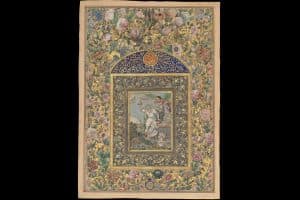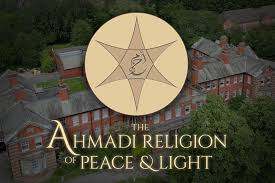By Jo Banks
Shamanism is the fastest-growing religious group in England and Wales, increasing from 650 people in 2011 to 8,000 identified in the 2021 Census. This represents the largest increase in membership of any group labelled ‘other religious groups’ on the census form.
What is Shamanism?
As practised in contemporary western contexts, shamanism is a social movement of individuals who believe in the effectiveness of certain practices and perform them either alone or with groups of others who share these beliefs.
The term “shaman” originally came from the Siberia and Mongolia region, referring to the spiritual practices and beliefs of the indigenous Evenki people. Some argue that the term should be used only in this context, although “shamanism” is now widely used to refer to a variety of beliefs and practices.
Shamanism has been described by Paul Francis, founder of the Three Ravens College of Therapeutic Shamanism, as “applied animism”. Animism has been defined in a variety of ways by scholars, including the belief that all nature is animated (E. B. Tylor), or that we live in relationship with many people, only some of whom are human (Graham Harvey). Whether they use the term “animism”, contemporary western shamans hold diverse beliefs about the cosmos that generally affirm that things other than humans — plants, bodies of water, and mountains — have souls and are just as conscious as humans. The dividing line between animism and shamanism is a matter of debate, and in common use, the terms “animism” and “shamanism” are often used interchangeably.
Many contemporary western shamans believe that an important part of the shamanic way of life is to live in “right relationship” with other beings, including other humans, but especially with the natural world. Unlike forms of ascetic spirituality, where the individual detaches themselves from worldly concerns, shamans generally see themselves as being part of a family that contains all of nature. Shamans often refer to “brother wolf” or “sister mountain” to represent this kinship. These shamans believe that the right way to live as a human is to exist harmoniously and ethically with nature and are often advocates for ecological causes like the protection of endangered species or action against climate change.
Western shamans often resist the idea that they belong to a religion, and say that shamanism has no sacred text, priesthood, official institution, or ruling body. Shamanism is often described by its adherents as self-directed, involving the individual’s person journey to connect to the world of nature and spiritual beings through shamanic techniques.
Universality of shamanism
A common belief among shamans in the West is that their beliefs and practices represent to a greater or lesser extent the religious or spiritual beliefs of all ancient cultures, and of all indigenous communities and tribes. Shamans with this perspective see their animistic worldview as a universal premodern spirituality that all humans practised for millennia until the emergence of city-state cultures and “civilisation”. According to this understanding, communally practised shamanic techniques are the elementary forms of religious life that are naturally part of human existence. Adherents today claim to be resurrecting an ancient, pure understanding and practice of spirituality from within a modern context.
Those who share this perspective often believe that we are unhealthy in the modern world because humanity has become cut off from nature. Shamanism is presented as a way of experiencing a world is fundamentally at odds with the materialistic western culture of today. Everything wrong with the modern era — including ecological destruction, societal inequality, depression, anxiety, and addiction — is interpreted as a result of turning from traditional beliefs and practices. Many shamans see the modern organised religions and concepts of God as false and damaging, obscuring the interconnectedness of nature.
Modern shamanism can mean removing oneself from western culture, and living with indigenous communities or alone in nature, but more often it means adopting practices and attitudes that allow the lifestyle within their modern context.
Spiritual realms
Many modern shamans also affirm the existence of spiritual realms, worlds beyond the ordinary reality we inhabit, to which shamans can journey through a variety of techniques. In these spiritual realms, communication can be made with the souls of humans and natural phenomena, or spiritual entities that have no physical counterpart. Shamanic healing techniques often involve journeying to the spiritual realms to retrieve parts of an individual’s soul that have been lost through trauma or suppressed by the modern world. A common shamanic cosmology involves three main realms, the lower, upper, and middle worlds.
The lower world is usually conceived as comprising natural environments and is generally associated with shamanic journeys that have as healing as their goal. The upper world is more ethereal, often experienced as shapes, colours, and symbols. Journeying to the upper world may involve contacting spiritual beings for guidance. The middle world is likened to ordinary reality.
Shamanic practices
Contemporary western shamans engage in a wide range of shamanic techniques that are believed to purify or heal the individual, allow the practitioner to journey to spiritual realms, consecrate locations, or come together as a community. Many of these practices borrow from a variety of indigenous and ancient religious traditions, like the sweat lodge ceremony, which originates from Native American cultures.
Rhythmic drumming
Shamanic drumming can be used to enter ecstatic trance states within which practitioners experience out-of-body journeying experiences and contact spiritual beings. According to some shamans, a drum must be played at a specific rhythm for a relatively short time — sometimes no more than 15 minutes — to achieve the desired effect.
Some also use rattles in co-ordination with the drum. The rattle is often associated with more specific spiritual experiences, invoking the assistance of power animals (spirit guides) or consecrating sacred spaces.
Trance dance
Shamans sometimes participate, blindfolded, in trance dances, to percussive rhythms, nature sounds, or music, often held in sacred spaces. Like rhythmic drumming, these rituals transport the dancer into a level of trance within which they experience journeys to spiritual realms and contact with spiritual beings.
The blindfold allows the dancer to release, enabling them to give themselves more fully to the experience. Some practitioners also use “fire breathing” — to energise the body, enhance the senses, and help the dancer let go of their ordinary sense perceptions — and “focused intention”, which relates to how the dancer sets the tone of their experience during the ritual.
Sweat lodge
The sweat lodge purification ritual is a communal ceremony that combines intense heat and steam with confined conditions, sometimes also including rhythmic drumming and singing. In a small structure where participants have gathered, sunlight is blocked out and water poured over heated granite to release steam. Herbs and other plants — cedar, tobacco, or sweetgrass — are sometimes added to the stones. Temperatures often reach 40C during the ritual, creating an intense atmosphere. Prayers may be offered in the ceremony, which can last several hours.
Therapeutic shamanism
Shamanism has been described as a “primitive” form of psychotherapy. However, shamans generally find this insulting and maintain that shamanism is distinct from psychotherapeutic work. Others have argued that there are clearly areas where shamanism and psychotherapy overlap and so each might learn from each other, leading to the development of a modern “therapeutic shamanism”.
Shamanic techniques have been adopted by some mental health practitioners and psychotherapists. The US psychologist Lisa Schwarz’s Comprehensive Resource Model is an example of a contemporary approach that draws on elements of shamanism, indigenous healing methods and alternative medicine. The model addresses conditions including post-traumatic stress disorder but is also designed to help anyone “remember who we are, that being our spiritual essence”.
Richard Whiteley, author of The Corporate Shaman, exemplifies another way in which shamanism is being applied in modern western contexts outside of a purely religious or spiritual setting. He believes that shamanic practices are applicable in business, allowing for deeper focus and communication within corporations. Processes such as shamanic journeying have been implemented in moments of impasse or confusion in meetings, where board members are encouraged to do this process, and then share any fresh insights into the issues at hand.
Psychoactive substances
Some shamans today use psychoactive substances such as ayahuasca, which contains the hallucinogenic dimethyltryptamine (DMT), traditionally an element of ceremonial spiritual medicine among the indigenous peoples of the Amazon basin. Thousands of westerners every year visit Iquitos, Peru, the epicentre of ayahuasca ritual tourism, to participate in ceremonies. Psychedelics like ayahuasca can produce trance states, out-of-body experiences, and powerful hallucinations that are considered meaningful or profound to the user. Psychoactive substances generally remain illegal in the West, and most UK-based shamanic organisations do not see them as essential to shamanic practice.
There are many shaman organisations, training centres, schools, and professional practitioners that offer additional techniques. Shamanism UK, for example, offers shamanic readings, cord cuttings — which sever “psychic ethereal energy cords” that drain our lifeforce or facilitate psychic attacks — and healings directed at the spirit of the land, where specific locations are consecrated or purified.
Such organisations as the Dorset-based Sacred Trust Centre offer intensive training in a variety of disciplines to would-be practitioners.
Where in the world do you find shamans?
The natural spiritual state of humanity is believed to be shamanic, so all uncontacted tribes and indigenous peoples with traditional religions are considered shamanistic by modern western shamans. Among these are included traditions from the Upper Amazon, Peru, Morocco, the Americas, Africa, Australia, Siberia, and from indigenous Inuit groups.
Other groups, which have attempted to resurrect ancient beliefs, can be considered shamanistic: for example, the British Druid Order regards Druidry the indigenous shamanic religion of the British Isles.
A 2021 Census on religion in England and Wales has revealed that 8,000 people now identify as shaman, up from 650 in 2011. This represents the largest increase in membership of any section labelled “other religious groups” which included Paganism, Jainism, and Wicca. There are now more self-identifying shamans than Rastafarians or Zoroastrians, who number 10,000 combined.
Challenges
Scholars of religion and spirituality have questioned the applicability of the term “shamanism” in discussions about the religion and spirituality of ancient and indigenous cultures. The very concept of shamanism has been regarded by some academics as a product of western imperialism, a device for homogenising and diminishing the distinctiveness of indigenous religious traditions and of displaying them as a single entity.
Some indigenous shamans have reacted with hostility to western shamanic practitioners, perceiving their appropriation of traditional cultural practices as a form of colonialism that disrespects the systems of secrecy that limited outsiders’ access to techniques. Online communities such as New Age Fraud challenge practitioners who have adopted traditional Native American beliefs and practices.
Other scholars have argued that the term “shamanism” can still be useful today in identifying a broad category of practices and understandings common to a variety of cultures. According to this understanding, shamanism can be seen as an aspect of certain religions, rather than a religion itself. Thomas DuBois, a scholar of folklore and religious studies, defines shamanism as involving a recognised professional who travels the cosmos through trance states entered via communally recognised rituals and cultivates personal relations with helping spirits to achieve ends for the community: generally, healing, divination, and/or the control of fortune.
Further reading
Jo Banks is a researcher at Inform. based at King’s College London, [email protected]. Inform can often put journalists in touch with academics with recent evidence-based research on specific movements




















